This site is part of various affiliate programs. Links may give us a small compensation for any purchases you make, at no additional cost to you. Please read the disclaimer policy for full details.
Time lapse photography is a potentially challenging discipline because it merges photography and videography. But it is an excellent technique to capture and showcase the passage of time and what it does to the scene or subject.
However, not every camera is well suited for timelapse photography, and not every style of timelapse is created equal.
You might be into relatively short timelapse videos, like capturing the sunrise (an hour or so), or a bit longer time-lapse, like capturing the full moon cycle during a day (about half a day). Also, you might be a construction contractor wanting to capture the construction of a whole building, and then you’ll need a device that can run for days on end.
Luckily, cameras are tools, and there are tools for everything. That being said, keep in mind that there is no perfect timelapse camera, just a perfect one for you and your needs.
This article will go over these ten best timelapse cameras in three categories – action cameras, professional cameras and enthusiast cameras:
- GoPro HERO11 – Best GoPro for Timelapse
- DJI Osmo Action – Waterproof Time Lapse Camera
- DJI Action 2 – Compact Camera with Time Lapse
- Brinno TLC200 Pro – Best Construction Time Lapse Camera
- Brinno TLC130 – Outdoor Time Lapse Camera
- Brinno BCC200 – Time Lapse Trail Camera
- Fujifilm X-S10 – Best Time Lapse Video Camera
- Panasonic Lumix GX85 – Best Cheap Camera for Time Lapse
- Sony A7III
- Nikon D850
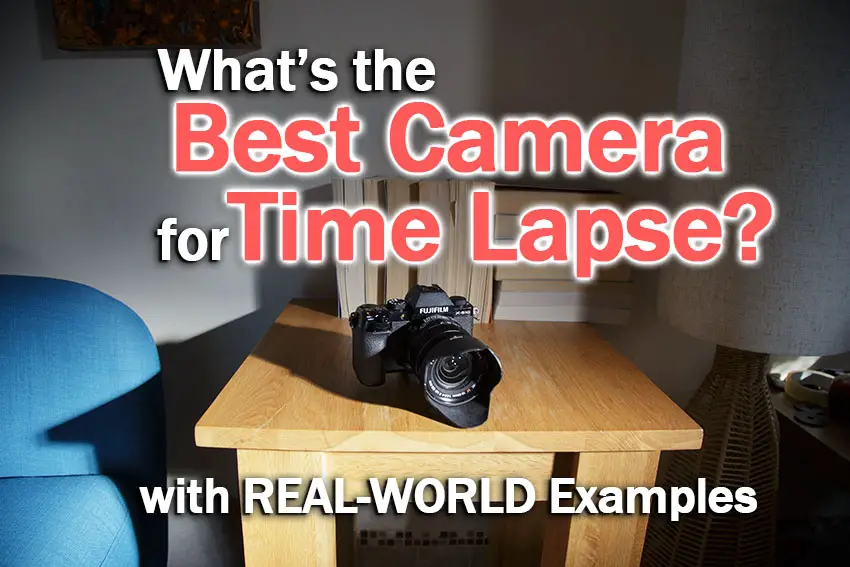
The Best Time Lapse Camera: Action Camera
The Best Timelapse Action Cam
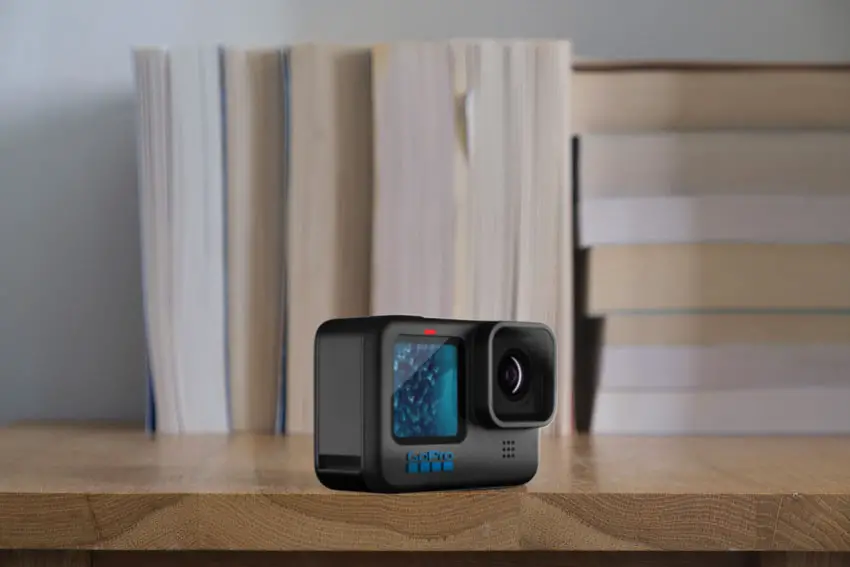
- Can shoot Timelapses in photo and video mode
- Stunning image quality
- Long battery life and can use external power
- It can take long intervals between shots, up to 60m
- Waterproof up to 10m
The Best Time Lapse Camera for Construction
Best Set-It-And-Forget-It Timelapse Camera
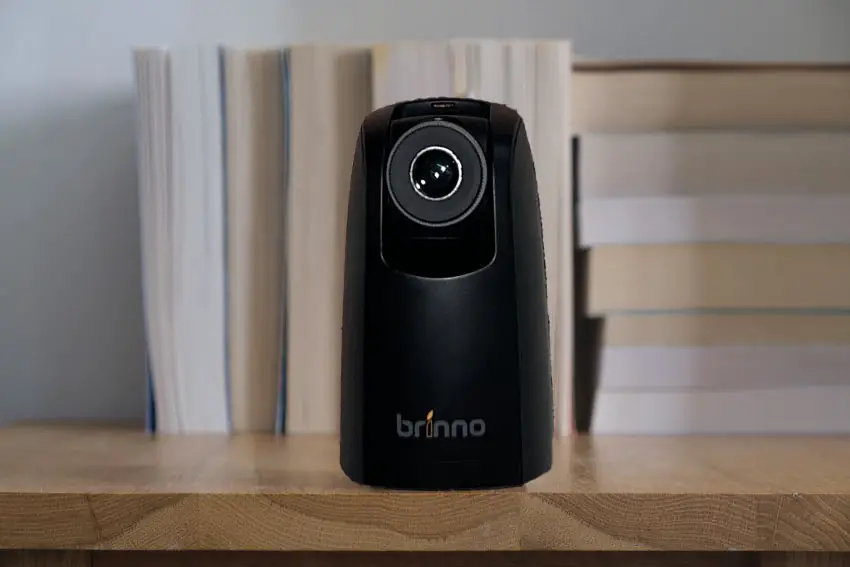
- It can run for more than a month on 4xAA batteries
- The maximum timelapse interval is 24 hours
- It can work with an external power source, such as a power bank
- Quite simple to set up and use
- Interchangeable lenses using CS mount
The Best Camera for Time Lapse: Enthusiasts
Best for Artistic Timelapses
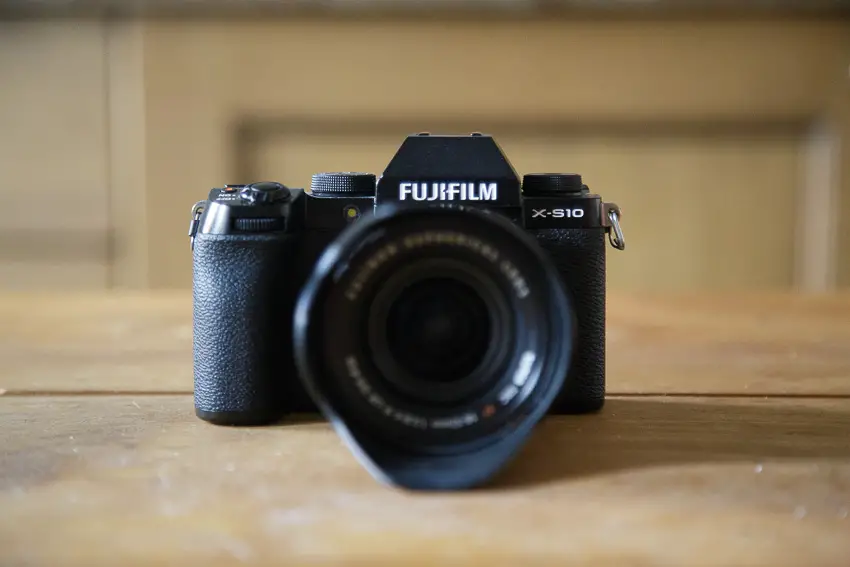
- Large APS-C sensor with great colors, dynamic range and fantastic image quality
- You have complete manual control over the camera
- The maximum timelapse interval is 24 hours
- You can get up to 6K timelapse video from the photo output
- Interchangeable lenses using Fuji X mount
This is the camera I use for my photography and to create time lapse images. See some examples of what it is capable of below.
Comparison of the Best Time Lapse Cameras
Camera | Max Timelapse Resolution Video: | Max Timelapse Resolution Photo: | Longest interval between frames: | Check Price | |
5.3K (16:9 ratio) | 27MP (5568x4872 | 8:7 ratio) | 60 minutes | |||
4K | 9MP (4000 x 2250) | 30 seconds | |||
4K | 12MP (4000 x 3000) | 40 seconds | |||
720p | Doesn’t output photographs | 24 hours | |||
1080p | Doesn’t output photographs | 24 hours | |||
720p | Doesn’t output photographs | 24 hours | |||
[Best Time Lapse Video Camera] | None | 26MP (6240x4160) | 24 hours | ||
[Cheap Time Lapse Camera] | 4K | 16MP (4592x3448) | 60 minutes | ||
None | 24MP (6000x4000) | 60 seconds | |||
4K | 45.7MP (8256x5504) | 10 minutes |
Reviews of the Best Time Lapse Cameras Currently On The Market
The list below aims to provide you with the most important information about every camera we review. Keep in mind that the list gets updated regularly, so it, and by extension you, can be up to date with the most current models and software/firmware updates for them.
Action Cameras for Time Lapses
1. GoPro HERO11 Black [Best GoPro for Timelapse]
Specifications:
- Sensor Size: 1/1.9”
- Max Timelapse Resolution Video: 5.3K (16:9 ratio)
- Max Timelapse Resolution Photo: 27MP (5568×4872 | 8:7 ratio)
- Lens: fixed 148°, with an even wider lens accessory available, increasing it to 158°
- Weather Sealing: Waterproof up to 10m/33ft. Up to 60m/196ft with GoPro protective case
- Battery Life: ~80min with regular battery, 120min with Enduro battery
- Charging while operating: Yes, via USB-C
- Longest interval setting: 60m
- Size: 71mm x 55mm x 34mm / 2.8in x 2.2in x 1.3in (W/H/D)
- Weight: 154g / 0.35lb
If you have been interested in photography, videography, or sports, you’ve probably heard of GoPro or seen loads of footage generated by GoPro action cameras.
The reality is that they are tiny little action cameras jam-packed with features, and they produce excellent videos, especially for their size.
Video Quality
The 27MP sensor will allow you to shoot time-lapses at up to 4K resolution with a 4:3 ratio, which means you get roughly 33% higher vertical resolution. Of course, you can do 4K resolution at the common 16:9.
If you wish to post-process the timelapse yourself, then the GoPro HERO11 can produce the timelapse in individually photographed photos. The photos you receive can be up to 27Mp (5568×4872) pixels. That will allow you to do a 4K time lapse up to around 5K. You can choose between JPEG photos or RAW photos.
However, if you want RAW photos which contain much more data, you’ll have to set the shooting interval to 2 seconds or more. If you want features like GoPro’s SuperPhoto or HDR, then you’ll have to increase the timelapse interval to 5 seconds or more.
When shooting Night Lapse with the GoPro (timelapse intended for the night time), then there are a bit more limitations. In photo mode, you can do RAW in any interval available, but you won’t get SuperPhoto nor HDR. Video timelapse remains with the same specs.
The quality of the result is surprisingly good, especially considering the sensor size. This little camera is so capable that it can do quite decent time-lapses of the Milky Way, which is no easy task.
Provided you can power it; the GoPro HERO11 can take time-lapses with intervals between frames of up to 60 minutes. So you can easily record time-lapses that can capture weeks of time passing by, and it is also ideal as a waterproof time lapse camera for underwater use.
Ease of Use
Being an action cam first, the GoPro HERO11 can take a beating, and it is water and dustproof out of the box. There are plenty of accessories available for it, straight from GoPro and a wide variety of third-party manufacturers.
So whatever you intend to do with it, there is an accessory for it. You can find suction cup accessories that will allow you to mount it to virtually any smooth surface, and you can find adhesive mounts to mount it on surfaces where the suction cup can’t stand. There are plenty of tripods for it as well, and anything else that your heart desires.
The GoPro HERO11 can be charged via USB-C Power Banks, and you can run it on a power bank without the internal battery as well. So you can easily power it for extended periods of time. With a mains power adapter, any smartphone charger that can supply over 2A can run the GoPro HERO11 indefinitely.
Simple back-of-the-envelope math, the enduro battery is 1720mah, and a simple common power bank is around 10 000mah (from which around 7000-8000mah are useable), which means that it will extend the shooting time of the go pro around 4 times. So from around 80-90 minutes, you’ll get 5-6 hours.
Who Is The GoPro HERO10 Black for?
In essence, the GoPro is for pretty much everybody who doesn’t need interchangeable lenses or extreme low light capabilities. It is a powerhouse in a small package, and it can fulfill most of the TimeLapse needs that beginners and enthusiasts might need.
It is not a completely plug-and-play solution for every situation, but it can take on most situations with just a power bank attached.
All in all, it is among the best all-in-one solutions with a tiny 154g package, and is the best GoPro for timelapse by far.
- Pros:
- Great image quality
- Wide angle lens
- Can shoot Timelapses in photo and video mode
- Waterproof up to 10m out of the box
- Can take a beating
- Plenty of accessories available
- Can work with an external power source, such as a power bank
- Not too expensive at $350
- It can take long intervals between shots, up to 60m
- Cons:
- Fixed lens, which requires accessories to change the angle of view
- Small screen, so navigating menus can be a bit tough for people with larger hands
2. DJI Osmo Action [Waterproof Time Lapse Camera]
Specifications:
- Sensor Size: 1/2.3”
- Max Timelapse Resolution Video: 4K
- Max Timelapse Resolution Photo: 9MP (4000 x 2250)
- Lens: fixed 145°
- Weather Sealing: Waterproof up to 11m/36ft. Up to 60m/196ft with Osmo Action Waterproof Case
- Battery Life: ~90min with a regular battery
- Charging while operating: Yes, via USB-C
- Longest interval setting: 30 sec
- Size: 65mm x 42mm x 35mm / 2.5in x 1.6in x 1.4in (W/H/D)
- Weight: 124g / 0.27lb
The DJI Osmo Action is the DJI’s take on the GoPro, and it essentially tries to do the same things that the GoPro does, but at a lower price. Of course, since there aren’t many generations out there for DJI to polish the device, in the first generation, expect some quirks.
Video Quality
Like the older GoPro versions, the DJI Osmo Action has a 1/2.3” sensor. However, in this case, the sensor is around 12MP, enough to produce a 4K timelapse video. However, in photo mode, you’ll still get 4K results, albeit with a hair higher resolution than the regular 4K timelapse video.
Like the GoPro, you can get RAW files in photo mode only if the interval is 2 seconds or longer. Since photos contain more data than frames from video, you can achieve a bit higher quality video if you make the timelapse yourself from still photos.
Like the GoPro, you can capture the stars with the DJI Osmo Action, but the quality will be significantly worse. Daytime time-lapses, however, will look great. The camera has a little less dynamic range than the GoPro, but that shouldn’t be a concern for most people.
The DJI Osmo Action has a timelapse interval of 30 seconds, which means regardless of the power supply, you’ll be pretty limited on how long you can have the camera running before you fill up the SD card. Also, without speed up in post-processing, the footage with such short intervals might end up being too slow for time-lapses spanning multiple days.
Ease Of Use
In this case, too, being an action cam first, the DJI should be able to take some beating and some dust and moisture. DJI claims that the camera is waterproof down to 11 meters, yet there are reports from many users that some units end up taking in water and bricking completely.
So, if you need to use the camera in harsh weather conditions, an Osmo Action Waterproof Case will give you a better piece of mind.
There are plenty of accessories for the DJI Osmo Action as well. Many of those accessories are adapted GoPro accessories which is great since the market for GoPro accessories is more than a decade old. This means that the accessories will be easier to find, and there will be a wide variety of things for you to play with.
The camera’s battery life is decent, with around 80-90 minutes of run time on a single charge, and if you need more, you can attach a power bank and have the camera running for hours. Make sure to remove the internal battery if you plan on running the DJI Osmo Action with a power bank since it might overheat.
Who is the DJI Osmo Action for?
This little camera packs a great punch if you need a small, light package that can take great daytime time-lapses at a decent price. It lacks some low light performance, but in a pinch, you can get out a decent enough looking timelapse then. You might need to denoise it a bit in post-production, however.
So, it is a great tool for beginners and enthusiasts on a tighter budget who can’t afford a GoPro.
- Pros:
- Excellent image quality for daytime time-lapses.
- Wide angle lens.
- Waterproof up to 11m out of the box.
- It can take a beating.
- Plenty of accessories are available.
- It can work with an external power source, such as a power bank.
- Not too expensive at $299 and is often discounted even further.
- Cons:
- Quality control seems to be lacking, with some units rendering waterproof seals useless.
- Fixed lens, which requires accessories to change the angle of view.
- Small screen, so navigating menus can be a bit tough for people with larger hands.
- Low light timelapse quality is quite worse compared to the competition.
- The maximum interval is just 30 seconds.
3. DJI Action 2 [Compact Camera with Time Lapse]
Specifications:
- Sensor Size: 1/1.7”
- Max Timelapse Resolution Video: 4K
- Max Timelapse Resolution Photo: 12MP (4000 x 3000)
- Lens: fixed 155° – 12.7mm equivalent
- Weather Sealing: Waterproof up to 10m/33ft. Up to 60m/196ft with Waterproof Case
- Battery Life: ~60min without screen module. ~120min with screen module
- Charging while operating: Yes, via USB-C
- Longest interval setting: 40 sec
- Size: 39mm x 39mm x 22mm / 1.5in x 1.5in x 0.8in (W/H/D)
- Weight: 56g / 0.12lb
DJI Action 2 is among the smallest action cameras out on the market, and is an ideal compact camera with time lapse. Capitalizing on the fame that the GoPro Session had, the DJI Action 2 aims to put everything that the Osmo Action could do but in a smaller and modular package. It works by combining different modules to increase the capabilities of the main unit.
Video Quality
The DJI Action 2 has a bigger sensor than the DJI Osmo Action, but image quality isn’t much of a difference. Even with a larger sensor, it looks a bit digitally sharpened, and in low light, it performs worse than the Osmo Action. It has less noise than the Osmo Action. However, the overall image is softer as well, which means there is a lot of digital noise reduction going on, which eats details.
The Action 2 can capture photo and video time-lapses, with pretty much the same capabilities as the Osmo Action. This means that you can make in-camera 4K video time-lapses or 4K photo time-lapses with RAW support.
Due to the sensor size limitations, the camera creates great time-lapses during the daytime, and the quality drops as soon as the sun goes down.
Bear in mind that the interval is limited to 40 seconds (10 seconds more than the Osmo Action), so you won’t be able to do extremely long time-lapses where you don’t need a bunch of photos per hour. Otherwise, it will do the job just fine.
Ease of Use
If you plan on using the main unit only, without the front touch screen module or the power module, you’ll be limited on using the camera without an SD card. That means you’ll be limited by its 22.4GB of internal storage. So, if you want to use an SD card, you’ll have to use the Power or Screen module. With the Power module, the set costs $399, while with the Dual Screen, it will set you back $519.
Of course, attaching another module to the camera means that the size doubles, and it loses the tiny footprint advantage it had over the other action cams.
The Power module does increase the battery life of the DJI Action 2 by a factor of two, so that might save you in a pinch.
Being a camera with such small dimensions, people with gloves or larger hands might find it difficult to navigate the menus. On the other hand, it is easy to attach it to stuff since there are plenty of magnetic accessories that work well, exploiting the fact that the camera is super light.
The camera is waterproof up to 10 meters; you can increase that with a waterproof case. Getting a waterproof case with DJI action cameras is wise, even if you take the camera out in the rain, since quality control isn’t the greatest.
Who is the DJI Action 2 for?
In essence, the DJI Action 2 is for people who don’t need time-lapses to run for days, and the small package is essential. Otherwise, the DJI Osmo Action or the GoPro HERO10 Black are better options.
- Pros:
- Great image quality for daytime time-lapses.
- Wide angle lens.
- Can shoot time-lapses in photo and video mode.
- Waterproof up to 11m out of the box.
- It can take a beating.
- Plenty of accessories are available.
- It can work with an external power source, such as a power bank.
- Cons:
- Small sensor size at 1/1.7”.
- Quality control seems to be lacking, with some units rendering waterproof seals useless.
- Fixed lens, which requires accessories to change the angle of view.
- Very small screen, so navigating menus can be a bit tough for people with larger hands.
- Low light timelapse quality is quite worse compared to the competition.
- The maximum interval is just 40 seconds.
- Requires one of two modules if you need more than 22.4GB of storage via an SD Card.
Construction Time Lapse Cameras
4. Brinno TLC200 Pro [Construction Time Lapse Camera]
Specifications:
- Sensor Size: 1/3”
- Max Timelapse Resolution Video: 720p
- Max Timelapse Resolution Photo: Doesn’t output photographs
- Lens: 112° – 19mm equivalent included, interchangeable CS mount lenses
- Weather Sealing: No. There is an optional waterproof case
- Battery Life: 240 000 frames at 2 seconds intervals
- Charging while operating: Yes, via Micro USB
- Longest interval setting: 24 hours
- Size: 64mm x 52mm x 107mm / 2.5in x 2in x 4.2in (W/H/D)
- Weight: 140g / 0.3lb
The Brinno TLC200 Pro is the easiest timelapse camera to use, even though it is an older model and just 720p. It is one of those set-it-and-forget-it kinds of cameras, and is an ideal time lapse camera for outdoors.
Video Quality
The 720p maximum video resolution is outdated for 2024’s standards since most cameras can easily capture 4K footage without breaking a sweat, and 720p has exactly nine times less resolution than 4K. So, no matter what you do, you won’t get many details from the footage.
However, small resolution means small filesizes, which might be perfect for people that want to do time-lapses just to observe changes. For example, this is a great camera for observing plants growing, and you don’t need 8 million pixels to see how much your plants have progressed during a given time.
The good thing is that the camera does everything. You place it, set the interval you want to shoot in, and it is ready when you want to see the footage. No post-processing is necessary, and you will get a simple AVI video with the timelapse already compiled.
Even though it is a 720p camera and a couple of years old, it handles low light decently if you set it up in the correct nighttime mode.
Ease of Use
The camera is quite simple to use; place it wherever you want, just make sure it is protected from the elements (or use the waterproof case, sold separately), pick the correct scene you want to shoot, aim the lens, focus it, and hit record.
The small screen might make it a bit tough to focus, but the lenses aren’t too wide-apertured, so even if you are slightly off, it won’t be a problem.
You’ll notice that the camera runs on 4xAA batteries, which is nice. You can use rechargeable ones, and they will last a long time. By Brinno’s specs, they should last more than 200 000 frames. In other words, you can make at least 2 hours long final video before the batteries run out.
Who is the Brinno TLC200 Pro for?
This barebones, simple-to-use camera with lower than average video quality is well suited for people who want the easiest and simplest solution and don’t require the highest video quality.
- Pros:
- Decently wide-angle lens included.
- Interchangeable lenses using CS mount.
- Quite simple to set up and use.
- It can work with an external power source, such as a power bank.
- It can run for more than a month on 4xAA batteries.
- The maximum timelapse interval is 24 hours.
- Cons:
- Small sensor size at 1/3”.
- The video resolution is limited to 720p.
- It isn’t waterproof out of the box.
5. Brinno TLC130 [Brinno Time Lapse Camera]
Specifications:
- Sensor Size: 1/2.7”
- Max Timelapse Resolution Video: 1080p
- Max Timelapse Resolution Photo: None
- Lens: Fixed 138° wide angle lens, 23mm equivalent
- Weather Sealing: IPX4 splash resistant
- Battery Life: 12 hours at 2 seconds intervals. Up to 16 days at 5 minutes intervals
- Charging while operating: Yes, via USB-C
- Longest interval setting: 24 hours
- Size: 55mm x 55mm x 28.2mm / 2.16in x 2.16in x 1.1in (W/H/D)
- Weight: 74.5g / 0.16lb
Brinno, as a brand, specializes in timelapse cameras. They produce everything in-house, from the sensor to the software. The TLC130 aims to be a small portable timelapse camera for people that want simplicity.
Video Quality
Like every Brinno product out there, the video quality is not great, but not terrible either. The TLC130 is limited to 1080p output from its 2.1-megapixel sensor. By today’s standards, 1080p is a bit outdated but still used in most of the applications. Most screens and smartphone displays are around 1080p resolution still, which allows this little camera to fit right in.
Unlike the action cams, theTLC130 has more flexibility in the interval selection, allowing you to do longer intervals. It outputs video or photo, whatever you need. So the camera can stitch the timelapse in the camera for you automatically.
Moreover, it can do sort of hybrid video and timelapse by recording 3-second videos and stitching them as what they call step video. Essentially, it takes 3-second clips at intervals you set, and it stitches it into a full video for you to use and view. It does everything for you.
The dynamic range is a bit lacking for today’s standard and is pretty bad in low light. So this camera is primarily useful during daylight with a lot of motion. If you set it to record a sunset, you’ll notice that it adjusts the exposure every couple of frames, so the end result has steps in the exposure change, which can be annoying.
Ease of Use
The camera is a simple little box with two buttons in total. One of the buttons is used to start and stop the time-lapse, and the other is used to start and stop the step video. If you want to change any settings, you’ll need to download a smartphone app, pair the camera with your smartphone, and use the smartphone to change the timelapse settings. That means the unit depends on another device for setup, which might be bad for some users.
The battery lasts 12 hours if you shoot at two-second intervals, which is good. If you need more than that, you can always attach a power bank to extend the battery life.
Since the camera has no screen, you’ll need to use your smartphone to see where you are pointing the camera at, which can be a bit annoying for some users.
Who is the Brinno TLC130 for?
If you want a simple timelapse-only device with a form factor of the DJI Action 2, then the TLC130 is for you.
- Pros:
- Small form factor.
- Lightweight and portable.
- It can be set up for long timelapse intervals.
- IPX4 splashproof weather sealing.
- Exports ready timelapse videos.
- Cons:
- Small sensor.
- Poor low light capabilities.
- No LCD screen. You are smartphone bound.
6. Brinno BCC200 [Outdoor Time Lapse Camera]
Specifications:
- Sensor Size: 1/3”
- Max Timelapse Resolution Video: 720p
- Max Timelapse Resolution Photo: Doesn’t output photographs
- Lens: 112° – 19mm equivalent included, interchangeable CS mount lenses
- Weather Sealing: Yes, with an included IPX4 water-resistant case
- Battery Life: 240 000 frames at 2 seconds intervals
- Charging while operating: Yes, via Micro USB
- Longest interval setting: 24 hours.
- Size: 64mm x 52mm x 107mm / 2.5in x 2in x 4.2in (W/H/D)
- Weight: 140g / 0.3lb
The Brinno BCC200 is essentially a package containing the TLC200 Pro, IPX4 Weather resistant housing, a high-quality aluminum clamp, and some bungee cords. You may ask, why? Well, this is a package suited for construction projects mostly, so it is a one-stop solution.
Video Quality
Since the BCC200 is basically TLC200 Pro with accessories, you will be getting the same 720p timelapse output. The video is baked in the camera and ready to use once the timelapse is completed. The resolution is far behind today’s standards, but it is more than enough for construction projects for which this camera is aimed for. It will handle low light decently for what it is if you set it in the correct mode.
Having a small resolution means you’ll have small files, which is excellent for long-term projects where other cameras can generate terabytes of data. Everything is ready at the end of the workday, and you can easily share your time-lapses with your audience, supervisor, or clients.
Ease of Use
The camera itself is simple to use. Pick your interval and scene preset, and hit record. The housing and the clamp are also easy to use, which means you can place it on a pole, scaffolding, or pretty much any pipe/pole location and observe your projects. It is durable enough to handle the rough conditions in a construction yard. Just don’t drop it from heights. It is not indestructible.
It might be a bit hard to focus on the small screen, but it won’t matter much, even if you miss focus slightly at such small apertures and the wide angle lens.
It is great that this is a set-it-and-forget-it kind of camera, running on AA batteries that are readily available. Of course, you can use rechargeable AA batteries, which will reduce your running cost and is good for the environment. Batteries are hard to recycle.
Who is the Brinno BCC200 Pro for?
The BCC200 package aims toward construction projects, so whether you have or are working on a construction project and you want a simple timelapse camera to observe the progress, the BCC200 is the right choice for you.
- Pros:
- Decently wide-angle lens included.
- Interchangeable lenses using CS mount.
- Quite simple to set up and use.
- It can work with an external power source, such as a power bank.
- It can run for more than a month on 4xAA batteries.
- The maximum timelapse interval is 24 hours.
- IPX4 water-resistant case included in the box.
- A mounting clamp is included in the box.
- Cons:
- Small sensor size at 1/3”.
- The video resolution is limited to 720p.
- The video quality is barely average.
- Very small screen with low resolution, making focusing a bit tough.
Enthusiast Time Lapse Cameras
7. Fujifilm X-S10 [Best Time Lapse Video Camera]
Specifications:
- Sensor Size: APS-C Back Side Illuminated X-TRANS CMOS
- Max Timelapse Resolution Video: None
- Max Timelapse Resolution Photo: 26MP (6240×4160)
- Lens: Interchangeable, 18-55mm f/2.8-4 kit lens included
- Weather Sealing: No. There are plenty of accessories to protect mirrorless cameras, however
- Battery Life: 325 frames by CIPA rating.
- Charging while operating: No, but it can be powered via USB (more on that later)
- Longest interval setting: 24 hours
- Size: 126mm x 85mm x 64mm / 4.96in x 3.34in x 2.51in (W/H/D)
- Weight: 465g / 1.02lb (with battery and SD card)
The Fuji X-S10 is a great APS-C camera, with an unconventional sensor providing excellent color rendition, possibly the best colors on the market. For reference, the APS-C sensor is four times larger in diagonal than the GoPro sensor and has around 14 times the surface area. You can fit 14 go pro sensors on the APS-C sensor, which is impressive.
Video Quality
The Fujifilm X-S10, a hybrid photo, and video camera, inherently can’t do time-lapse videos, which means that you won’t get a finished video out of the camera directly. It allows you to take the individual frames of the timelapse by shooting photos at a set interval.
That means you will be left with a full card of still photos, whether in JPEG or RAW (or both, your choice), with up to 26 megapixels of resolution. Then you have to stitch the timelapse yourself using a video editor. That allows you to do 6K time-lapses with excellent dynamic range and image quality, provided you shoot and edit the photos right.
Being an almost professional APS-C camera by Fujifilm means you have complete creative control over the look and feel of your timelapse. You can use a short shutter speed to create jumpy time-lapses or a slower shutter speed to create more flowy time-lapses if that is what you desire.
Having an APS-C sensor means you have excellent low light capabilities, blowing the GoPros and other similar solutions out of the water. You can comfortably shoot the Milky Way, especially with wide apertured lenses, and not worry about poor image quality or tons of noise. Moreover, you won’t have to worry about denoising or post-processing algorithms softening the image or ruining colors. You have complete control of the look and feel of your shots.
The kit lens can cover most of your timelapse needs, and it has a decent f/2.8 aperture which means it will handle low light fantastically too.
Ease of Use
In this case, you are dealing with a mid-range mirrorless camera, meaning that you have to deal with all the quirks and features that these cameras have. On the one hand, you can change the lenses and use pretty much anything lens that Fuji makes and other third-party manufacturers, and there are more than a hundred lenses that you can choose from. On the other hand, the camera provides complete manual control over every aspect, which is hard to get with action cams.
However, the Fuji is significantly larger than the action cams, as any DSLR or Mirrorless camera would be. However, as such, it is small and light enough to fit on smaller tripods, so portability isn’t that bad.
Sadly this is not a set-it-and-forget-it kind of camera, and it is not weather sealed. So if you need to expose the camera and the lens to the elements, you’ll need a protective housing.
The battery life is quite low, at 325 photos per battery, but you can use an external power source to extend the life of the battery. A quick charge power bank would do. There is a catch, though. The camera can either use the external power to extend the battery’s life or charge the battery if you charge the battery, the camera needs to be turned off.
It is a bit weird setup, but realistically you can simply extend the battery life with an external power supply, and you can do so for hours. Note that you need a power bank capable of power delivery, a regular power bank that charges phones won’t do. So look for a power bank that can charge laptops.
Being an almost professional camera, it costs around 3-4 GoPros which means it is not a budget offering.
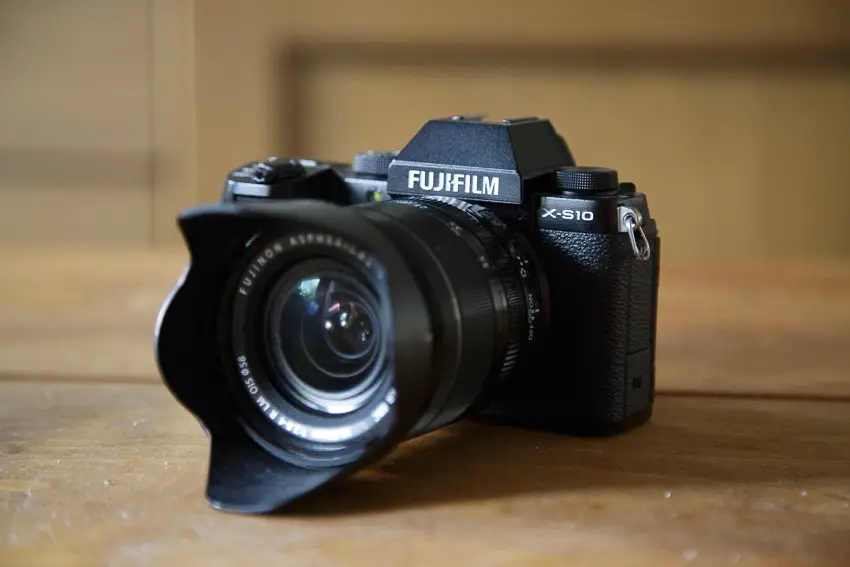
Who is the Fujifilm X-S10 for?
If you want a great timelapse camera with excellent image quality but in a smaller package with a lower price tag than the pro-full-frame cameras out there, and you want to do some photography, too, then the X-S10 is an excellent choice.
- Pros:
- Large APS-C sensor with great colors and dynamic range.
- Excellent image quality.
- Interchangeable lenses using Fuji X mount.
- Quite simple to set up and use.
- You have complete manual control over the camera.
- It can work with an external power source, such as a power bank.
- The maximum timelapse interval is 24 hours.
- You can get up to 6K timelapse video from the photo output.
- Cons:
- No timelapse video output, just a series of photos you need to stitch yourself.
- It isn’t waterproof out of the box.
8. Panasonic Lumix GX85 [Best Cheap Camera for Time Lapse]
Specifications:
- Sensor Size: Micro Four Thirds
- Max Timelapse Resolution Video: 4K
- Max Timelapse Resolution Photo: 16MP (4592×3448)
- Lens: Interchangeable, 12-32mm f/3.5 – 5.6 included
- Weather Sealing: No. There are plenty of accessories to protect mirrorless cameras, however
- Battery Life: 290 frames by CIPA rating
- Charging while operating: No, but you can use a DC coupler
- Longest interval setting: 60 minutes
- Size: 122mm x 70.6mm x 44mm / 4.80in x 2.78in x 1.73in (W/H/D)
- Weight: 493g / 1.08lb (with battery, SD card, and lens)
Lumix cameras shook the camera industry to the core because Panasonic didn’t hold back on features. They tried to jam as many features and technologies as possible in their micro four-thirds line-up. Ranging from pro-level video features to highly efficient image stabilization features. Even though the micro four-thirds sensors are smaller than the APS-C, they are still plenty big to handle most scenarios.
Video Quality
The 16-megapixel MFT sensor in the GX85 is quite capable, producing very good image quality, both in daylight and in low light. You can shoot time-lapses at up to 4K resolution and get photos and video output.
The camera inherently records still frames in photo mode, be it RAW or JPEG, but you can stitch those in a 4K video via the camera menu. It takes the camera around 10 minutes to go through 800 JPEG photos and provides a ready-to-use video timelapse for you.
The low light performance is decent, significantly better than the action cams, but it falls behind the full-frame cameras. You can comfortably shoot milky way time-lapses, and they will look great with a little noise reduction. Speedbooster adapters will further improve the low light capabilities of this camera by essentially doing some optical magic to simulate the APS-C sensor and, with that, gain around one stop of light. Great, isn’t it?
Ease of Use
Like any mirrorless camera, the Panasonic GX85 is quite simple to use. You have complete manual control over the camera and can change everything you desire.
The battery life is relatively low, sitting at just 290 frames, give or take, and you can’t use a USB charger to power the camera for longer periods of time.
You can use a dummy battery, also known as DC Coupler, to plug the camera into any outlet and have it run indefinitely. There are DC couplers that work with power banks as well, and sadly this is an accessory that you’ll have to purchase separately.
Having an interchangeable lens mount means you can use various lenses. Via lens adapters, you can use pretty much any DSLR lens out there, regardless of the brand.
It is a small camera compared to others in the class, meaning that it is pretty portable and packs a severe punch in its size and weight. Sadly it is not weather sealed, so you’ll have to look for protective cases for it if you need it to work in harsh environments.
Who is the Panasonic Lumix GX85 for?
If you want a cheap time lapse camera that is also powerful with a sensor larger than the action cams, and that can take all sorts of different lenses, then the Panasonic GX85 is the best cheap camera for time-lapse.
- Pros:
- Decently large Micro Four Thirds sensor.
- Can shoot photo and video time-lapses.
- Interchangeable lenses and a wide variety of lenses available.
- Decent low light performance.
- Decent 60-minute time-lapse interval.
- You have complete manual control over the camera.
- Great price at $600 with two lenses included.
- Cons:
- Poor battery life.
- No USB charging to extend battery life.
- No weather sealing.
9. Sony A7III
Specifications:
- Sensor Size: Full-frame
- Max Timelapse Resolution Video: Doesn’t output timelapse video
- Max Timelapse Resolution Photo: 24MP (6000×4000)
- Lens: Interchangeable E-mount lenses. 28-70mm f/3.5-5.6 OSS lens included.
- Weather Sealing: No
- Battery Life: 710 shots
- Charging while operating: Yes, via USB-C.
- Longest interval setting: 60 seconds
- Size: 126.9mm x 95.6mm x 73.7mm / 5in x 3.8in x 2.9in (W/H/D).
- Weight: 650g / 1lb (with battery and sd card)
The Sony A7III was a revolutionary full-frame mirrorless camera when it was released. It packed loads of features, an excellent 24mp full-frame sensor, great autofocus, and it was priced better than the competition. A firmware update enabled the time-lapse intervalometer in the camera, making it one of the best time-lapse cameras on the market aimed at creative professionals.
Video Quality
The A7III has excellent image quality. The large sensor lets in a lot of light per pixel, and with that, you will get low noise levels, exceptional dynamic range, and outstanding low light performance.
With the 24MP resolution, you can make time-lapses up to 6K resolution, but since it doesn’t make the video in camera, you’ll have to make the video yourself from the photos taken. The camera lets you take JPEG or RAW (or both) photos when in timelapse mode, allowing you to have the full power of the sensor available to you.
Since it is a full-frame backside illuminated sensor, you can take excellent low light time-lapses. Capturing the Miky Way in great detail shouldn’t be a problem.
Ease of Use
Being a mirrorless camera, it is relatively light and can be easily mounted on a small tripod or a flexible tripod like the Gorillapod. Pair that with a wide plethora of lenses available, and you have a very flexible system on your hands. You can even adapt vintage lenses if you want to achieve particular looks. The sky (and beyond it) is the limit.
Even though the battery life isn’t the best, you can plug it into a power bank and run it for hours.
The Sony menu system of the A7III is a bit disorganized and hard to navigate for new people, but you get used to it after a while. On a positive note, the camera features dual SD card slots, so you can record the timelapse photos to two SD cards for redundancy.
Who is the Sony A7III for?
Photographers who want great image quality from a full-frame sensor in a relatively light package at a reasonable price should find the A7III a good choice.
- Pros:
- Large full-frame sensor.
- Almost perfect image quality.
- Interchangeable lenses using Sony E mount.
- Quite simple to set up and use.
- You have complete manual control over the camera.
- It can work with an external power source, such as a power bank.
- You can get up to 6K timelapse video from the photo output.
- It can shoot time-lapse photos using the electronic shutter to reduce the shutter mechanism wear.
- Cons:
- No time-lapse video output, just a series of photos you need to stitch yourself.
- The maximum time-lapse interval is limited to 60 seconds.
- Quite expensive.
10. Nikon D850
Specifications:
- Sensor Size: Full-frame
- Max Timelapse Resolution Video: 4K
- Max Timelapse Resolution Photo: 45.7MP (8256×5504)
- Lens: Interchangeable F-mount lenses. 28-70mm f/3.5-5.6 OSS lens included.
- Weather Sealing: Yes. Lens has to be weather sealed as well.
- Battery Life: 1840 shots
- Charging while operating: No, you will need to use a DC coupler for it
- Longest interval setting: 10 minutes
- Size: 146mm x 124mm x 78.5mm / 5.8in x 4.9in x 3.1in (W/H/D)
- Weight: 915g / 2lb
The Nikon D850 was the best and most feature-packed DSLR that Nikon released aside from the D6. Many time-lapse photographers swear by it due to the high-resolution sensor with excellent image quality and feature-packed time-lapse capabilities.
Video Quality
The D850 offers great photo and video timelapse options. It can produce video time-lapses in-camera up to 4K resolution, with exceptional quality.
Suppose you like fiddling with the images yourself. In that case, you can shoot 45.7-megapixel RAW files and create a whopping 8K time-lapses with near-perfect image quality and excellent low light capabilities. You won’t miss a star in the night sky, provided you use the correct lens.
It can do all that silently, with a single click, when it starts and finishes the timelapse.
The sensor is one of the most advanced sensors Nikon produced for the DSLR line, and with that comes nearly unrivaled image quality.
Ease of Use
It is easy to set up the timelapse with this camera. You can do a maximum of a 10-minute interval, for up to 8 hours of shooting. The battery will last 1840 shots. With a battery grip, you can double that by using two batteries.
You can use a DC coupler (dummy battery) if you want to shoot more than 3500 frames, but realistically two batteries will last you around 5 hours at a 5 seconds interval.
Being a DSLR and a pro one at that, it is a big camera. Weighing nearly one kilogram without a lens or a battery, the whole package can easily reach two kilograms (4.5 pounds). That means you’ll need a tougher tripod, and mounting the camera to stuff means more expensive accessories.
Figuring out the menu system shouldn’t be a problem. Everything is explained most of the time.
The camera is weather sealed, meaning that it can take harsher weather. However, in order to remain weather sealed, you’ll need to use a lens that is weather sealed as well.
Who is the Nikon D850 for?
If you want little to no compromise in image quality in all light conditions and the capabilities to do an 8K timelapse – all that in a rugged enough body, then the D850 is for you.
- Pros:
- Large full-frame sensor.
- Almost perfect image quality with high resolution.
- Interchangeable lenses using Nikon F mount.
- Quite simple to set up and use.
- You have complete manual control over the camera.
- It can work with an external power source, such as a power bank.
- You can get up to 8K timelapse video from the photo output.
- You can get up to 4K timelapse video directly produced in camera.
- It can shoot time-lapse photos using the electronic shutter to reduce the shutter mechanism wear.
- It is weather sealed by the highest Nikon standards.
- Cons:
- The maximum time-lapse shooting length is limited to 8 hours.
- It can’t be charged via USB while shooting.
- Very expensive.
How To Choose A Time Lapse Camera That Works For You
Because you can approach time-lapses very differently, you’ll need to know what to look for when you are choosing the right camera for you.
Regardless of the use case or how the camera is designed, the same principles apply to every camera. So let’s go through what are the more important parameters you should look out for.
Sensor Size And Processing
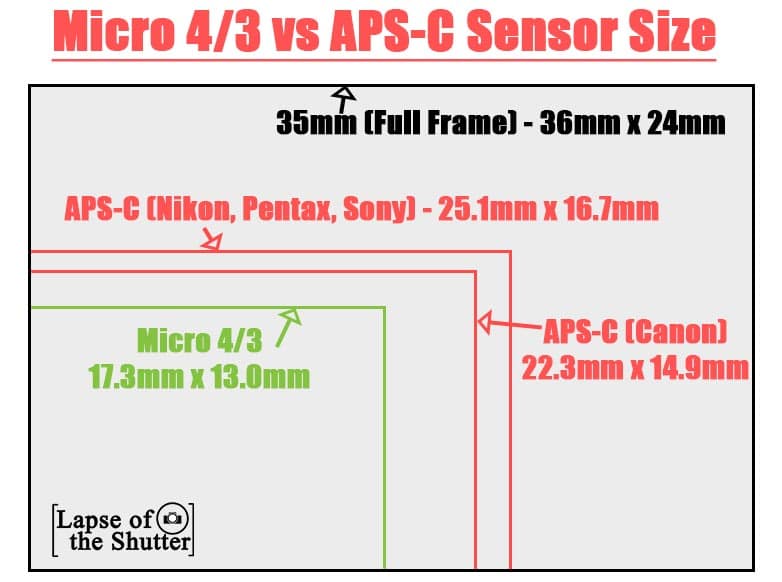
The image quality is generally dictated by the sensor size and the software driving it. With sensor sizes, bigger almost always equals better. However, don’t be fooled by megapixels. Physical size is what counts. A 100-megapixel sensor in a phone camera will never outperform a 100-megapixel full-frame sensor, regardless of the software magic that is happening.
So when choosing the right timelapse camera for you, keep the sensor size in mind. A larger sensor will equal better low light performance and better dynamic range, most of the time. The software and processing power driving that sensor is equally important. That is why your smartphone takes outstanding photos with a tiny sensor.
Resolution
Depending on your use case, the resolution that you need will vary.
Generally speaking, if all other things are equal, higher sensor resolution means more detail and larger file sizes as a consequence, meaning that lower resolution cameras can take longer time lapses (over the course of days or weeks) as they don’t fill up their memory cards as fast.
Lens Quality And Field Of View
The lens has the role of gathering light and focusing it onto the sensor. So a high-quality lens will produce sharper images and improve the low-light performance of the device.
Moreover, the lens dictates how much your camera sees. A lens with a wider field of view will capture more, while a lens with a smaller field of view will zoom in better.
You’ll have to look for a camera with interchangeable lenses if you need different angles of view for different scenarios.
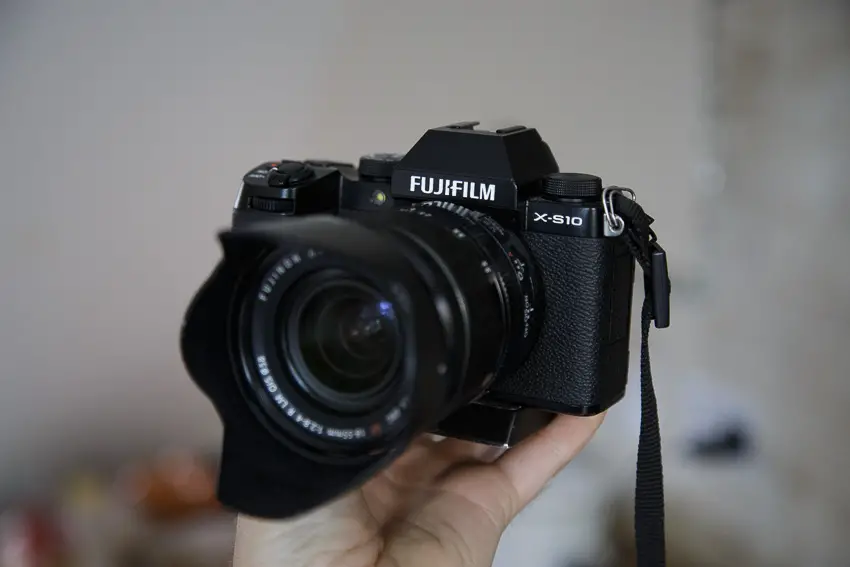
Battery Life And External Battery Support
If you are going to shoot longer time-lapses, where you’ll need the camera to run for hours on end, you’ll have to be aware of the battery life. Some cameras have great batteries that can power the camera for hours on end, and others will require you to change the batteries often.
Many modern cameras allow you to attach an external power source, like a power bank via USB or a DC power adapter. So if you need to shoot longer without you attending the camera, look for a camera that can take at least a power bank. A good 20000mah power bank can power even the most power-hungry cameras for at least 12 hours, if not longer.
Weather Sealing And Toughness
Depending on your needs, you might be shooting in harsh weather conditions, or your gear might be constantly exposed to the elements. That means you’ll have to be aware of the camera’s capabilities to handle harsh weather. Some cameras are weather sealed, and some aren’t. Other cameras are partially sealed and can resist some dust and moisture, but they can’t be used underwater – for this you will need an action camera.
Otherwise, if the picture quality you need can’t be achieved with a properly weather-sealed camera, you might want to look into cases that will weather seal the camera. There are plenty of options for the most popular timelapse cameras, so you have choices when it comes to that.
Handling mechanical force is equally as important as weather sealing. If you are that contractor I previously mentioned, you’ll probably be looking for a camera that can take a beating as well. So factor that into your purchasing decision.
Size, Weight, and Mounting Support
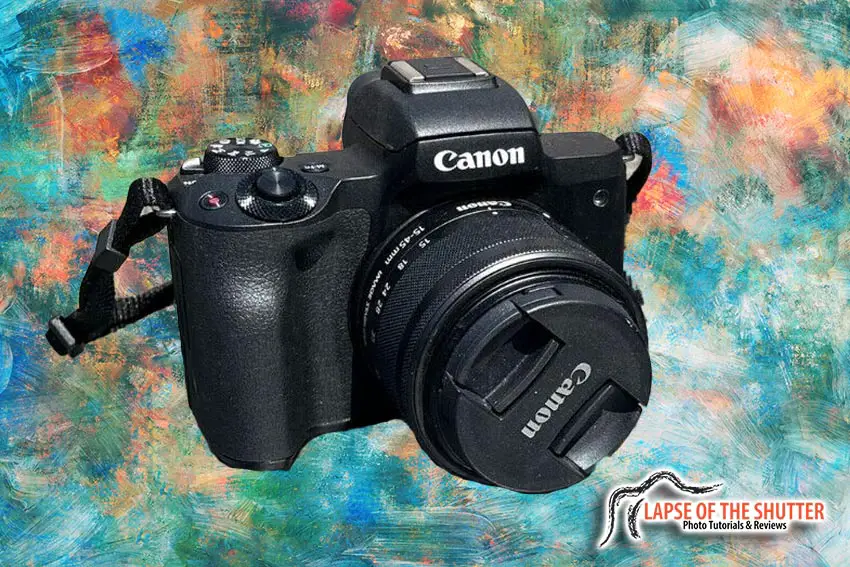
Sometimes, the best camera is the one that is portable enough and the one that you can attach to all sorts of places with ease. Other times, it is the big chunky camera with the best sensor, regardless if you have to lug a heavy tripod around with you. But the big and chunky camera can be the worse choice if you need something tiny and inconspicuous as a GoPro.
So, keep in mind the use cases for your camera, and choose a camera with size, weight, and mounting options that suit your needs and production the most.
Your Involvement
The last bastion of picking the right camera is how involved you want to be in the shooting and post-processing the timelapse. Think about whether you want to shoot and then edit hundreds of photos so you can make a timelapse from a couple of seconds or whether you want the camera to give you a finished video that you can use as is.
Keep in mind that if you want to edit everything yourself and have the know-how, you will have a much better result, even from a mediocre camera. If you leave the camera to do the magic, you might end up with a timelapse that looks mediocre at best and end up being nothing special.
Final Thoughts on the Best Cameras for Time Lapse
As you probably can see from this extensive list, there is no perfect time-lapse camera. In the world of time lapses, no matter how much money you throw at it, you won’t find a camera that can do everything right. That means you’ll have to weigh the pros and cons of every camera and see which one works best for your needs.
The problem is when you dip your toes into time-lapse photography/videography, you can’t stop, it is addictive, and it is fun.
The Best Timelapse Action Cam

- Can shoot Timelapses in photo and video mode
- Stunning image quality
- Long battery life and can use external power
- It can take long intervals between shots, up to 60m
- Waterproof up to 10m
Best Set-It-And-Forget-It Timelapse Camera

- It can run for more than a month on 4xAA batteries
- The maximum timelapse interval is 24 hours
- It can work with an external power source, such as a power bank
- Quite simple to set up and use
- Interchangeable lenses using CS mount
Best for Artistic Timelapses

- Large APS-C sensor with great colors, dynamic range and fantastic image quality
- You have complete manual control over the camera
- The maximum timelapse interval is 24 hours
- You can get up to 6K timelapse video from the photo output
- Interchangeable lenses using Fuji X mount
Read More:

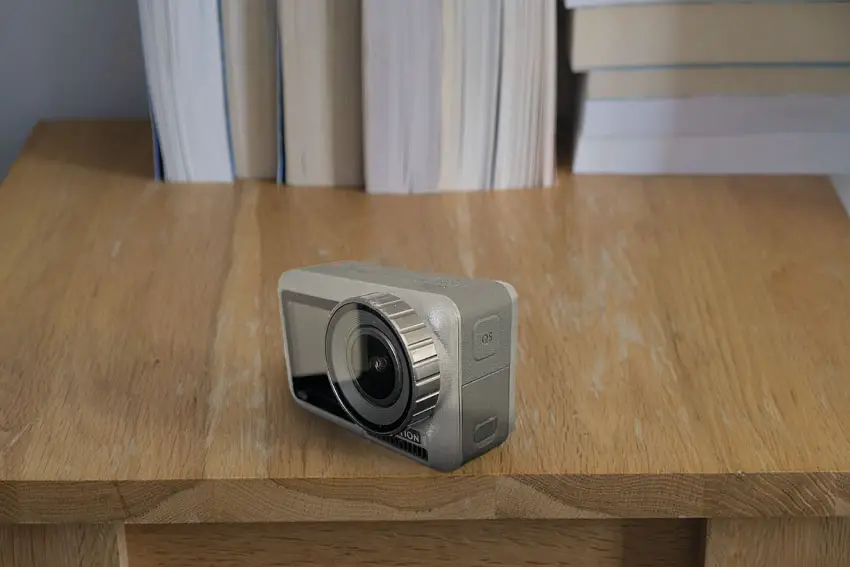
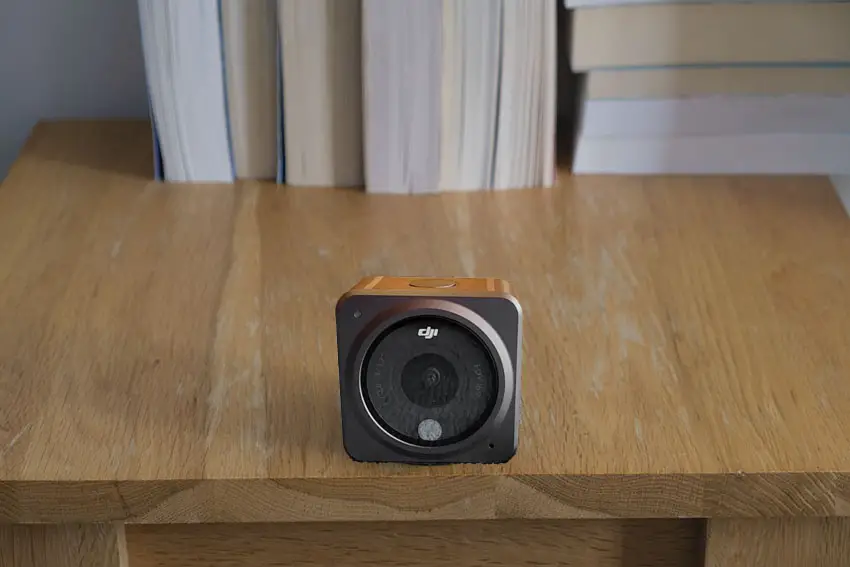

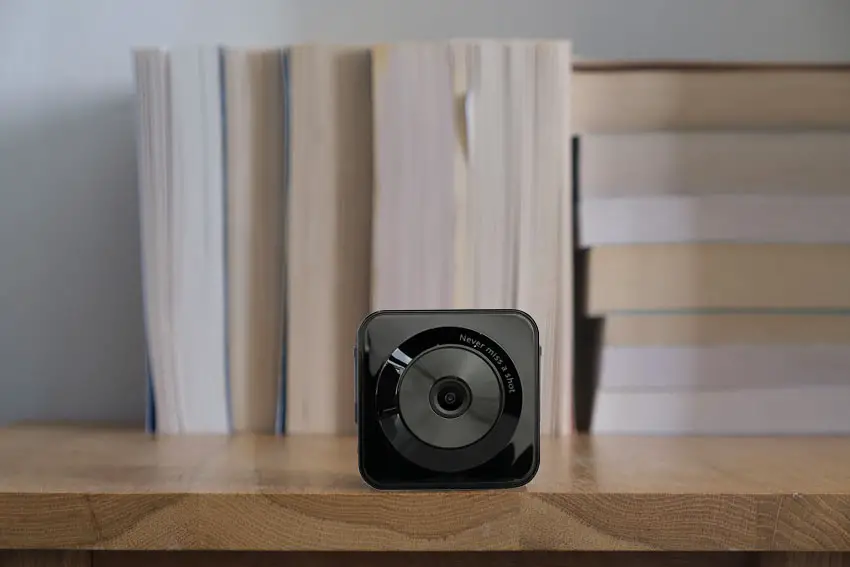
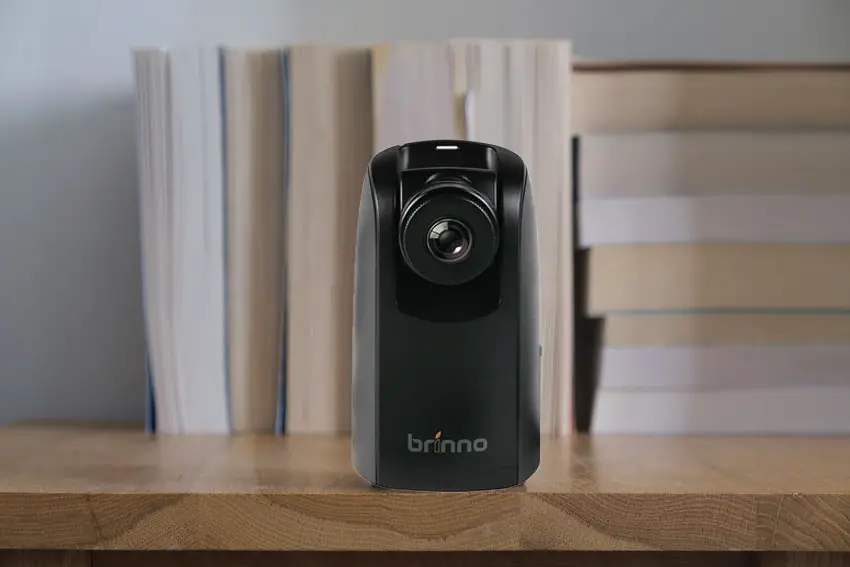

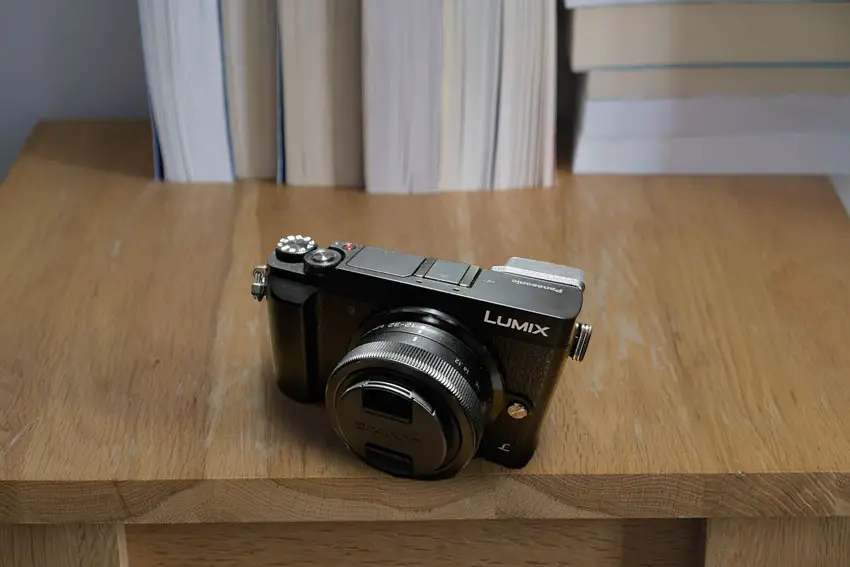
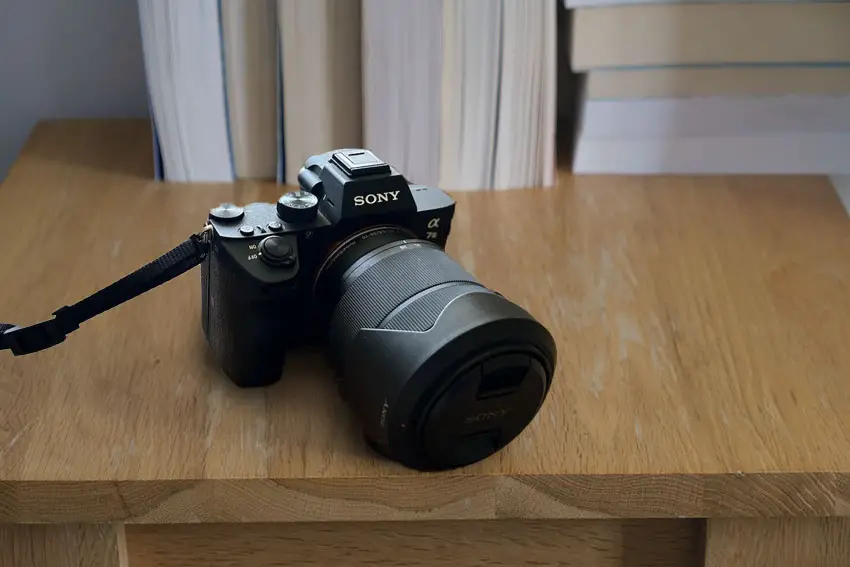
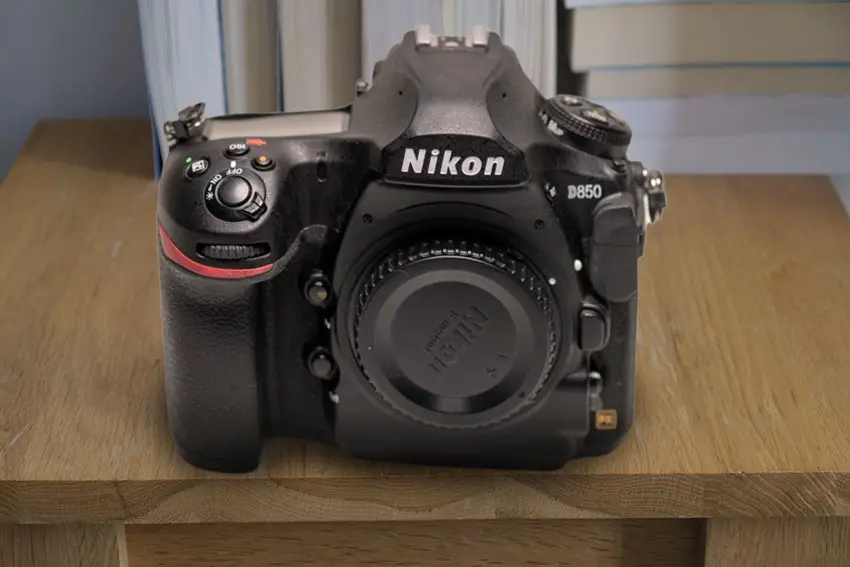







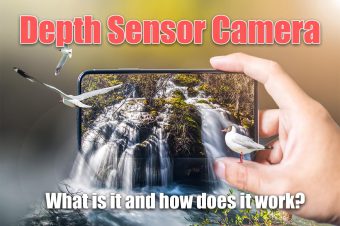
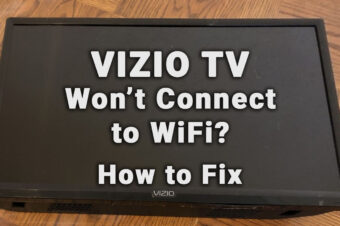
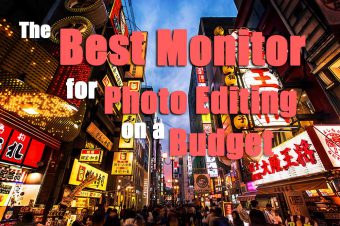
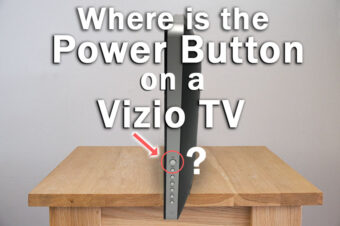
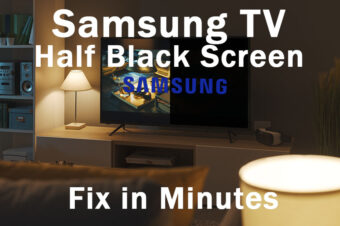
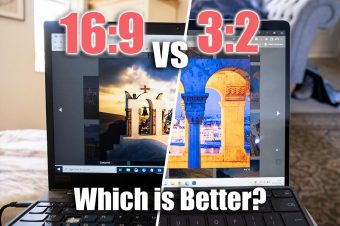
Leave a Reply